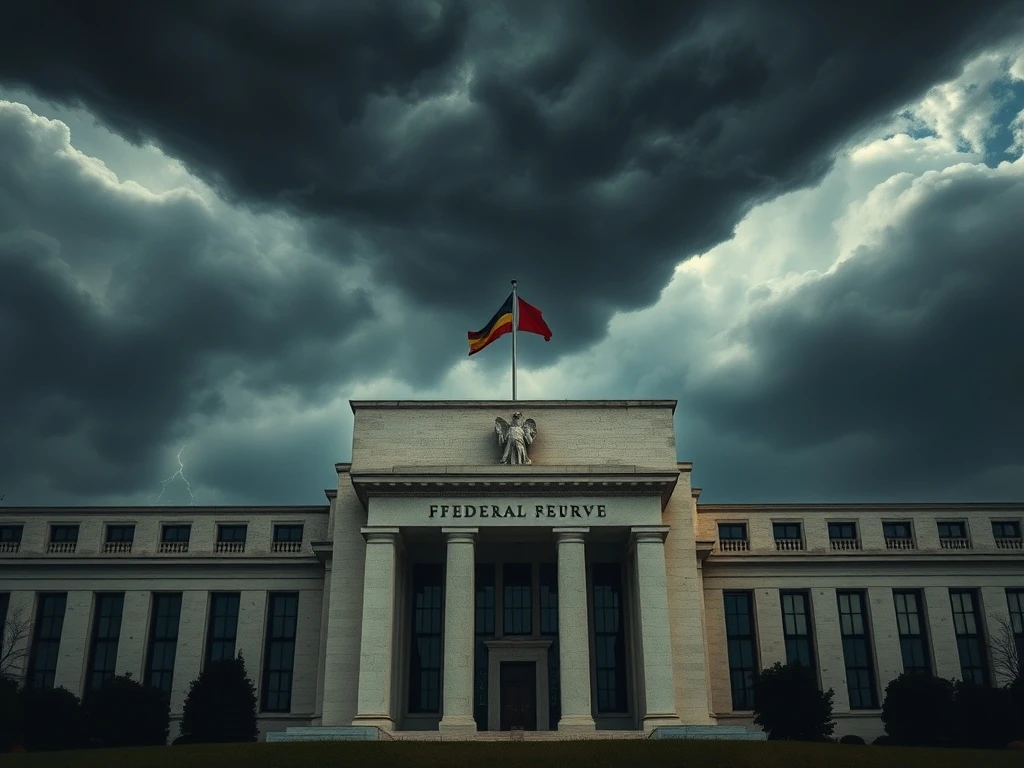Fed Defies Trump Pressure, Holds Rates at 4.5% Amid Inflation Concerns

In a bold move, the Federal Reserve has decided to hold interest rates steady at 4.5%, despite mounting political pressure from former President Donald Trump and two dissenting votes within the FOMC. This decision comes at a critical time for both traditional markets and the cryptocurrency sector, as investors watch closely for signs of economic stability or turbulence.
Why Did the Fed Hold Interest Rates Steady?
The Federal Open Market Committee (FOMC) voted to maintain the current 4.5% interest rate, though not without internal conflict. Two members, Christopher Waller and Michelle Bowman, pushed for a 0.25 percentage point reduction. This rare dissent highlights growing divisions within the Fed as it navigates:
- Persistent inflation slightly above the 2% target
- Potential impacts of Trump’s new trade agreements and tariffs
- A strong 3% GDP growth in Q2 2025
- Slowing consumer spending despite economic expansion
Trump Pressure and Fed Independence
Chair Jerome Powell emphasized the Fed’s commitment to maintaining monetary independence despite political pressure. The decision document notably acknowledged the dissent, suggesting the FOMC’s stance might be evolving. Powell stated that no decisions have been finalized for September, leaving room for potential policy shifts based on upcoming economic data.
Inflation Concerns and Market Reactions
With core inflation rising to 2.3% in May, the Fed faces delicate balancing act. Powell noted potential inflationary pressures from:
| Factor | Potential Impact |
|---|---|
| 25% tariffs on Indian imports | Increased consumer prices |
| Undisclosed EU trade rates | Supply chain uncertainties |
| Strong labor market | Wage-price spiral risks |
Market expectations remain cautious, with CME FedWatch data showing only a 43% probability of a 0.5% cut by December. Cryptocurrency markets typically react to Fed decisions, making this a crucial development for digital asset investors.
What’s Next for Monetary Policy?
Analysts observe subtle shifts in the Fed’s tone. Key takeaways include:
- Growing data-dependence in policy decisions
- Potential dovish turn by September
- Ongoing geopolitical risks (Ukraine conflict, Russia sanctions)
The Fed’s next moves will significantly impact both traditional and crypto markets. With only three meetings left in 2025, every decision carries heightened importance for investors navigating this uncertain economic landscape.
FAQs
Q: How does the Fed’s decision affect cryptocurrency markets?
A: Crypto markets often react to interest rate decisions as they impact investor risk appetite and dollar strength.
Q: Why did two FOMC members dissent?
A: Waller and Bowman believed economic conditions warranted a 0.25% rate cut to support growth.
Q: What inflation indicators is the Fed watching?
A: Core inflation (currently 2.3%) and potential effects of new trade tariffs are key concerns.
Q: When might the Fed next change rates?
A: Markets currently price the first potential cut in October, though September remains possible.








